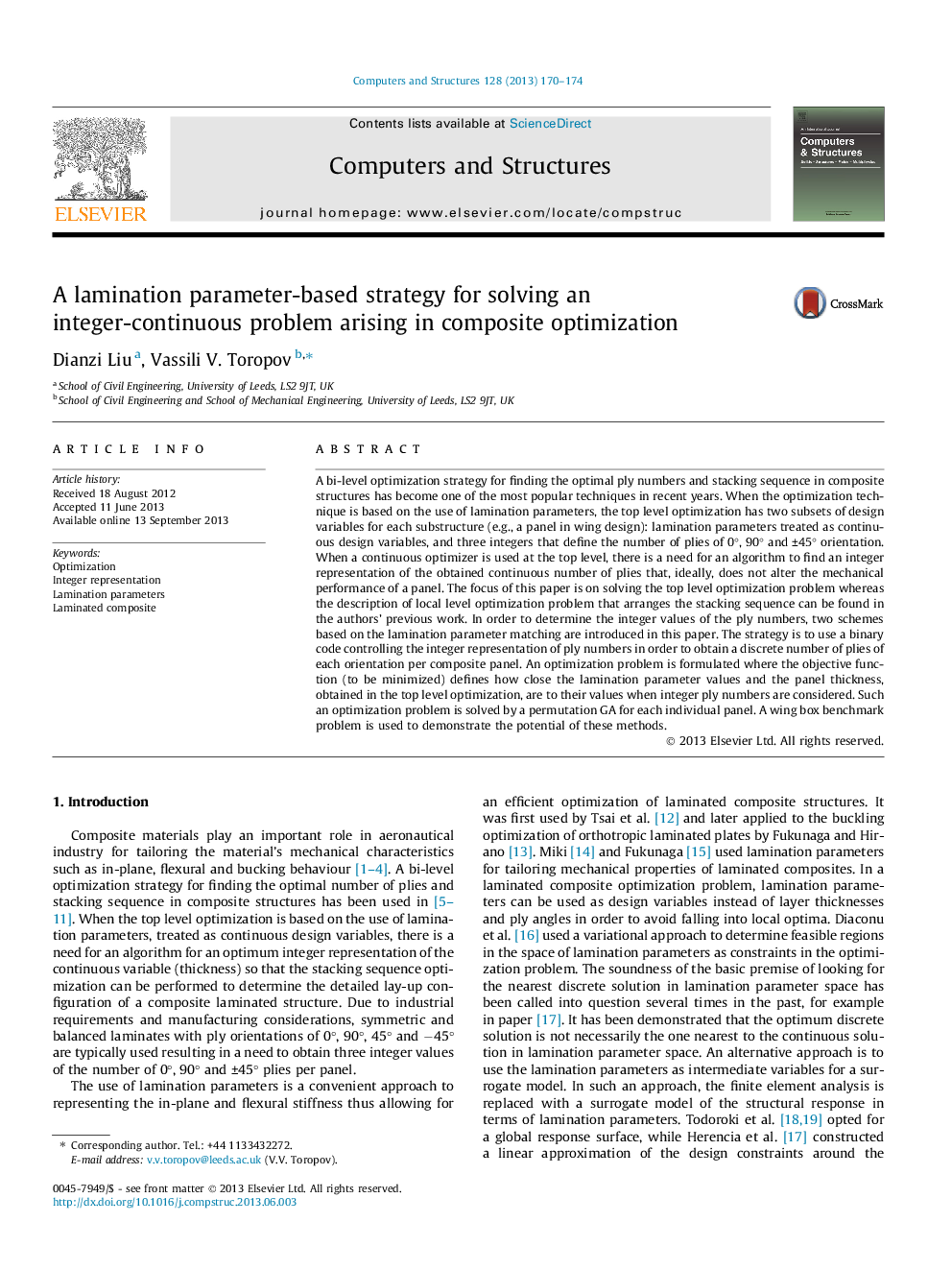| Article ID | Journal | Published Year | Pages | File Type |
|---|---|---|---|---|
| 511138 | Computers & Structures | 2013 | 5 Pages |
•Composite optimization often produces a continuous representation of the ply numbers.•An integer representation is obtained by the lamination parameter matching.•A permutation GA is used to achieve the matching.•A wing box benchmark problem is used to demonstrate the potential of the technique.
A bi-level optimization strategy for finding the optimal ply numbers and stacking sequence in composite structures has become one of the most popular techniques in recent years. When the optimization technique is based on the use of lamination parameters, the top level optimization has two subsets of design variables for each substructure (e.g., a panel in wing design): lamination parameters treated as continuous design variables, and three integers that define the number of plies of 0°, 90° and ±45° orientation. When a continuous optimizer is used at the top level, there is a need for an algorithm to find an integer representation of the obtained continuous number of plies that, ideally, does not alter the mechanical performance of a panel. The focus of this paper is on solving the top level optimization problem whereas the description of local level optimization problem that arranges the stacking sequence can be found in the authors’ previous work. In order to determine the integer values of the ply numbers, two schemes based on the lamination parameter matching are introduced in this paper. The strategy is to use a binary code controlling the integer representation of ply numbers in order to obtain a discrete number of plies of each orientation per composite panel. An optimization problem is formulated where the objective function (to be minimized) defines how close the lamination parameter values and the panel thickness, obtained in the top level optimization, are to their values when integer ply numbers are considered. Such an optimization problem is solved by a permutation GA for each individual panel. A wing box benchmark problem is used to demonstrate the potential of these methods.
